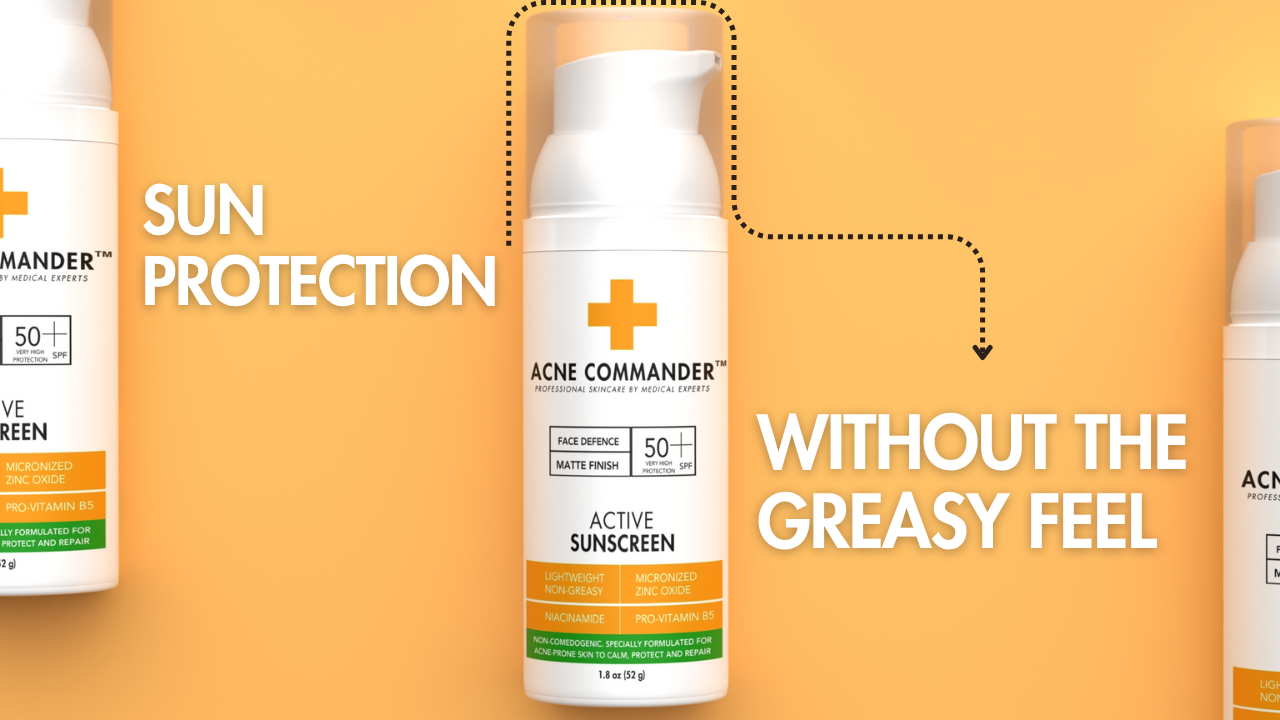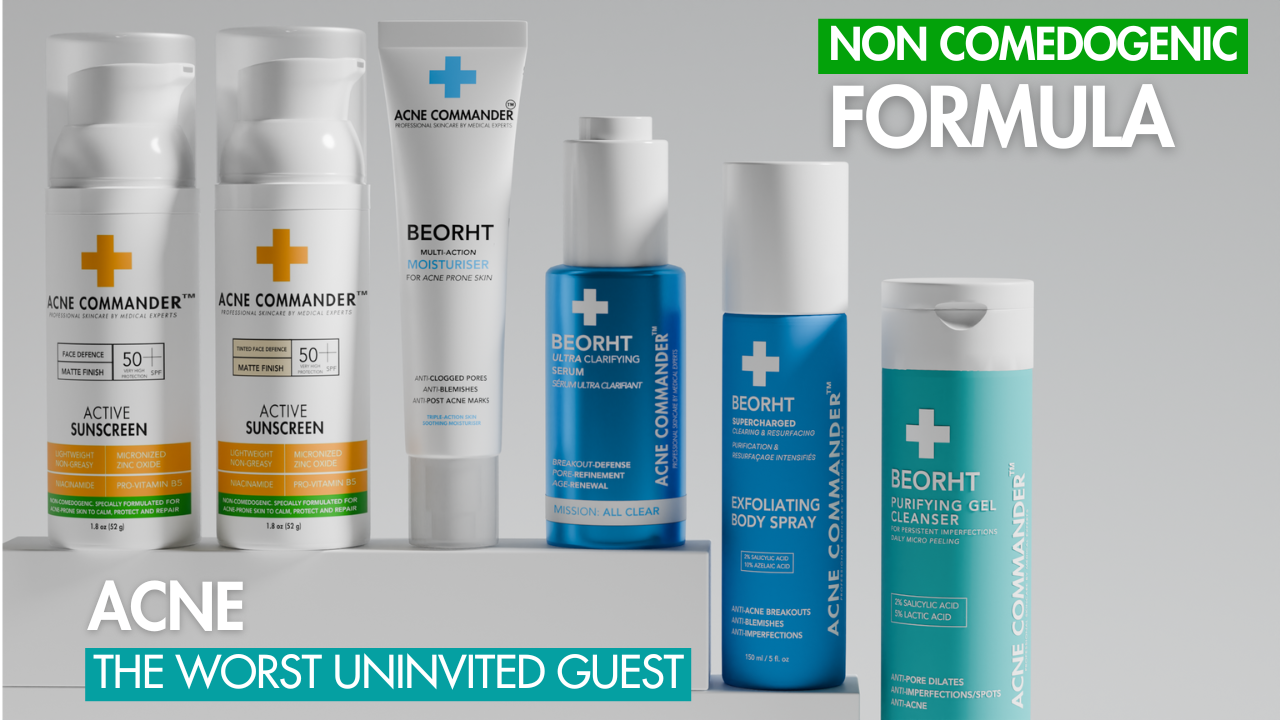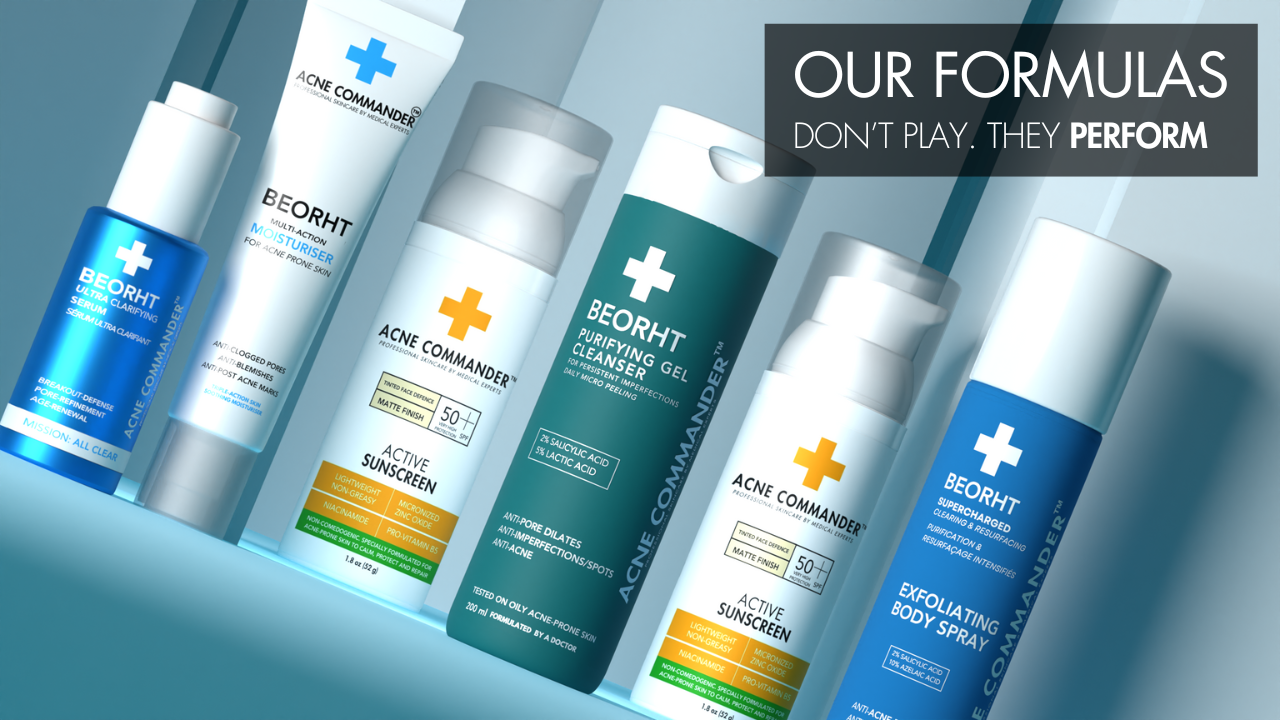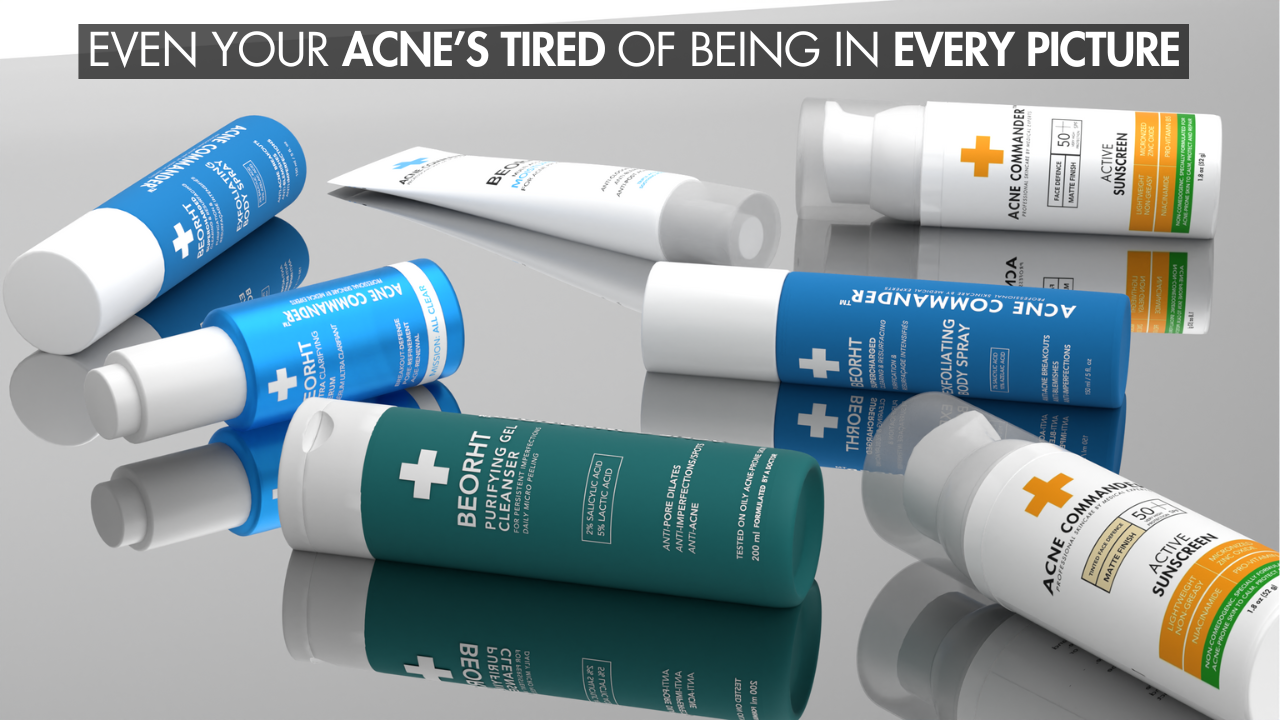Introduction: Should You Use Gel Moisturizers for Acne? What the Science Says
If you’ve ever looked for a moisturizer while battling acne, you’ve probably seen the hype around gel moisturizers. Marketed as lightweight, oil-free, and fast-absorbing, gel moisturizers are often praised as the go-to solution for acne-prone skin.
But do they actually work?
More importantly, are gel moisturizers the best solution for acne-prone skin, or is there a better alternative?
In this article, we’ll break down:
-
Whether gel moisturizers are truly ideal for acne-prone skin
-
Where they fall short
-
Why Acne Commander 3-in-1 Repairing Moisturiser, a scientifically formulated cream, outperforms most gels by delivering hydration, treatment, and repair in one solution
Section 1: What Are Gel Moisturizers?
Gel moisturizers are water-based formulas with a lightweight, jelly-like texture. They often contain:
-
Humectants like hyaluronic acid or glycerin
-
A small number of synthetic polymers for slip
-
Few (or no) oils
They absorb quickly and feel light on the skin, making them popular among those with oily or acne-prone skin, especially in hot or humid climates.
Pros:
-
Fast absorption
-
Lightweight and breathable
-
Usually non-comedogenic
-
Refreshing or cooling sensation
Cons:
-
Lack of occlusives or emollients
-
Often not hydrating enough for dry, irritated skin
-
Can contain alcohol, fragrance, or irritating preservatives
-
May not provide the barrier repair acne-prone skin desperately needs
Section 2: What Does Acne-Prone Skin
Really
Need?
Contrary to popular belief, acne-prone skin is often:
-
Dehydrated
-
Inflamed
-
Barrier-impaired
-
Sensitive to active treatments
What does this skin type need?
-
Hydration to reduce flakiness and irritation
-
Barrier support to repair skin and prevent overproduction of oil
-
Targeted actives like salicylic acid and niacinamide
-
Non-comedogenic moisturizer, oil-free, but still effective
Most gel moisturizers fail to deliver points #2 and #3.
Section 3: Why Gel Moisturizers Alone May Not Be Enough
Many popular gel moisturizers (like Neutrogena Hydro Boost or Clinique Moisture Surge) only hydrate; they don’t treat acne, calm inflammation, or repair the skin barrier.
As a result:
Skin feels good temporarily
Breakouts continue
Redness and flakiness persist
Skin remains vulnerable and reactive
Section 4: Introducing Acne Commander 3-in-1, A Cream That Outperforms Gels
While not a gel, Acne Commander 3-in-1 Repairing Moisturiser is a lightweight cream designed for acne-prone, inflamed, and dehydrated skin. It absorbs like a gel but delivers treatment-grade performance.
Why does it outperform typical gel moisturizers?
|
Feature |
Gel Moisturizers |
|
|
Lightweight Feel |
✅ |
✅ |
|
Fast Absorbing |
✅ |
✅ |
|
Hydration |
✅ |
✅✅ |
|
Barrier Repair |
❌ |
✅✅✅ |
|
Anti-Acne Actives |
❌ |
✅✅✅ |
|
Skin Texture Refining |
❌ |
✅✅✅ |
Section 5: Ingredient Highlights – What Acne-Prone Skin Needs (and Gets Here)
🔬 Salicylic Acid (2%)
Unclogs pores, exfoliates, prevents future breakouts, without over-drying like many acid peels.
🛡 Niacinamide
Reduces oil, calms inflammation, and fades post-acne marks.
⚡ Zinc PCA
Regulates sebum and has antibacterial properties, key for congested skin.
💧 Glycerin + Mannose + Hyaluronic Acid
Deep hydration to combat dryness and dehydration from acne treatments.
🌱 Allantoin + Panthenol
Soothe, calm, and heal irritated skin.
🧬 2-Oleamido-1,3-Octadecanediol
A ceramide-mimicking molecule that rebuilds the skin barrier.
🧪 Vitreoscilla Ferment
Supports microbiome balance, a frontier science ingredient ideal for sensitive, acne-prone skin.
Section 6: Texture That Rivals Gels, But With More Benefits
Acne Commander 3-in-1 is a non-greasy cream that feels like a light gel when applied:
-
Spreads effortlessly
-
Dries quickly
-
Leaves no residue or shine
-
Perfect under sunscreen or makeup
But unlike gels, it doesn’t evaporate or leave your skin craving more hydration 30 minutes later. It locks in moisture and strengthens the skin.
Section 7: What Dermatologists Say About Gel Moisturizers vs Barrier Creams
“Gel moisturizers can hydrate the skin, but they often lack ingredients necessary to repair a damaged barrier, which is critical for acne sufferers.”
— Dr. Rachel Nazarian, MD
“For acne-prone patients, I look for non-comedogenic creams that combine hydration, actives, and barrier support. Niacinamide and zinc PCA are non-negotiables.”
— Dr. Shereene Idriss
Section 8: When to Use Gels vs Cream-Based Moisturizers
|
Situation |
Gel Moisturizer |
Acne Commander 3-in-1 |
|
Hot, humid weather |
✅ |
✅ |
|
Layering under makeup |
✅ |
✅ |
|
Severe breakouts + dry skin |
❌ |
✅ |
|
Post-treatment healing |
❌ |
✅ |
|
Using salicylic acid/retinoids |
❌ |
✅ |
|
Barrier support needed |
❌ |
✅✅✅ |
Section 9: Real People, Real Results
“I thought gel moisturizers were best for acne, but they did nothing for my redness or peeling. Acne Commander feels richer, but still so light, my skin actually healed.”
— Naomi, 28
“I used Clinique Moisture Surge for years, but it never treated my acne. This cream actually reduced breakouts AND fixed my flaking.”
— Farid, 21
“I was nervous to switch from a gel to a cream, but Acne Commander sinks in like water. Now my skin looks clearer and less reactive.”
— Samantha, 33
Section 10: Final Verdict, Are Gel Moisturizers Good for Acne-Prone Skin?
Yes, but only to a point.
They hydrate.
They absorb fast.
They feel nice.
But they don’t treat, repair, or protect.
For acne-prone skin that’s inflamed, flaky, or barrier-damaged, a smartly formulated cream like Acne Commander 3-in-1 Repairing Moisturiser gives you:
-
Clinical-grade ingredients
-
A lightweight gel-like finish
-
Acne-fighting + calming + hydrating power
-
Long-term skin transformation





